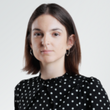Inflation: Jim Chalmers denies government spending is to blame as RBA disagrees on cause

Treasurer Jim Chalmers and the Reserve Bank are at odds over the role of government spending in the inflation challenge, as Australians grapple with the harsh reality of higher interest rates for longer.
The central bank has ruled out any rate cuts this side of Christmas as inflation proves “sticky” and persistent, warning the economy remains overheated and demand remains too high.
Hours after Dr Chalmers denied Labor’s spending was adding to inflation, the RBA’s chief economist Sarah Hunter told the Senate committee into cost-of-living on Wednesday it was looking for “softer growth” in public expenditure before interest rates could be cut.
Sign up to The Nightly's newsletters.
Get the first look at the digital newspaper, curated daily stories and breaking headlines delivered to your inbox.
By continuing you agree to our Terms and Privacy Policy.Dr Hunter also cast doubt over Dr Chalmer’s suggestions Labor’s $300 power bill relief was putting downward pressure on inflation.
A day earlier, RBA governor Michele Bullock conceded the board had weighed raising the cash rate from 4.35 per cent because of concerns about “excess demand” in the economy. She said it risked prolonging the time it would take to get inflation back to the two-to-three per cent target rate, now not predicted to happen until the end of 2025.
“Make no mistake: inflation is still too high, and the board does remain concerned about the degree of excess demand in the economy ... we need to see demand and supply coming back into better balance,” Ms Bullock said on Tuesday.
In its updated predictions, the RBA now expects public demand to increase by 4.3 per cent in the year to December 2024 — well above the previous forecast of 1.5 per cent.
“The stronger outlook for public demand reflects ongoing spending and recent announcements by federal and state and territory governments,” the RBA said in its statement of monetary policy.
Dr Hunter reinforced the bank’s position before the Senate.
“We’re looking at the latest announcements coming out from the various State Budgets, from the Federal Budget, and we see coming through the data as well — how progressing on some of the big infrastructure that’s happening,” she said.
“When we look at the totality, what we see is the economy, at the moment, the pace of growth is very soft — the March quarter data was very soft, just 0.1 points of the GDP.”
AMP’s chief economist Shane Oliver told the Senate committee that Ms Bullock had made clear how significant and “unhelpful” a role government spending was having.
“When asked why the forecasts have gone up, she specifically referred to numbers of high government spending,” he said.
“There are other things in there as well, but I have a feeling that if we had slower growth in government spending, the Reserve Bank would be closer to cutting.”
Dr Chalmers had earlier on Wednesday denied his government’s spending was fuelling inflation.
He claimed the revised forecasts showed the government’s cost of living policies were “helping to push inflation down in the near term, not up”.
“The new forecast from the Reserve Bank is that the Reserve Bank’s near-term inflation forecasts are better, not worse. And that’s because of the design of our cost-of-living policies. In addition to our cost-of-living policies, the Governor has previously said our surpluses are helping as well,” he told ABC Radio.
“And all of that means that inflation would be higher without our efforts in the budget.
“Budget spending is not the primary determinant of prices in the economy, but we can be helpful and we are being helpful. With the design of our cost of living policies which help us get back to targets sooner.”
Dr Hunter said because the energy rebates were temporary, they didn’t do much to get inflation back under control “sustainably”.
The RBA’s headline inflation forecasts show that while CPI will decrease during the life of the policies, it will rise again when they end.
They also won’t have an impact on trimmed mean inflation, which the RBA uses to gauge underlying price pressures.
Ms Bullock highlighted that view on Tuesday.
“Just because (headline inflation) pops down briefly for a few quarters under 3 per cent and then pops back up, I think people would understand that we’re in here for the long game. We’re not here for the quarter-to-quarter movements,” she said
Jane Hume, committee chair and the Coalition’s finance spokeswoman, said the Albanese Government had its foot on the accelerator, while the RBA had it on the brake.
“Instead of showing restraint in their fiscal policy to be in line with the RBA, the Albanese Government has increased spending ... that’s not what the RBA wants to see,” she said.
“Australians are poorer under Labor, and from the evidence we heard today, it’s clear that there is no end in sight to the financial pain households and businesses are facing right now.”

